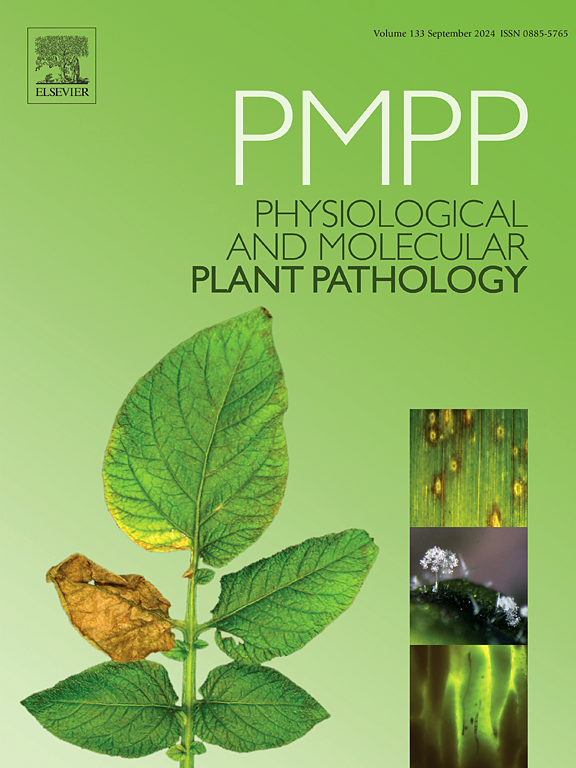Enhancing Fusarium oxysporum tolerance in Phaseolus vulgaris: Isolation and characterization of bacterial endophytes
IF 2.8
3区 农林科学
Q2 PLANT SCIENCES
引用次数: 0
Abstract
Research surrounding microbial biocontrol has garnered considerable attention in the last few years due to the numerous advantages as opposed to synthetic agrochemicals. Phaseolus vulgaris is an important legume that is cultivated worldwide, especially in third-world countries. The growth and yield of this crop are often severely limited by the pathogen Fusarium oxysporum. The aim of the study is to investigate the biological control potential of six plant bacterial isolates against F. oxysporum, both in vitro and in vivo. Six bacterial endophytes were isolated from Ledebouria ovatifolia leaves (E1), Solanum dulcamara leaves (E2), Cortalaria retusa leaves (E3), Euphorbia prostrata roots (R1), Solanum nigrum roots (R2), and Helichrysum splendidum roots (R3). These isolates were characterized for any biocontrol activity they might have against F. oxysporum PPR1. Isolation, characterization, identification, and biocontrol antagonistic assays were carried out in vitro against F. oxysporum, following standard protocols. The isolates were identified using 16S rRNA gene PCR sequencing. A phylogenetic analysis indicated that the leaf isolates displayed a close relationship with Bacillus altitudinis (E1), Streptomyces bikiensis strain SBM (E2), and Pseudomonas rhodesiae (E3). Root isolates displayed a close relationship with Enterobacter kobei (R1), Enterobacter sp. (R2), and Pseudomonas sp. strain (R3). Five out of the six isolates exhibited catalase activity and zinc solubilization activity, whereas all isolates exhibited siderophore production activity. Most of the tested isolates were able to produce the extracellular hydrolytic enzymes protease and amylase. The isolates exhibiting the highest hydrolytic enzyme activities were able to significantly inhibit F. oxysporum growth in vitro. E. kobei exhibited the most promising plant growth-promoting activity, hydrolytic enzyme activity, F. oxysporum antagonism, and increased seedling growth of P. vulgaris. These results suggest that E. kobei represents a good biocontrol candidate against F. oxysporum. The ability of this bacterial isolate to colonize and its promising biological activities suggest it has enormous potential to be used as both a biopesticide and plant growth stimulator.
求助全文
约1分钟内获得全文
求助全文
来源期刊
CiteScore
4.30
自引率
7.40%
发文量
130
审稿时长
38 days
期刊介绍:
Physiological and Molecular Plant Pathology provides an International forum for original research papers, reviews, and commentaries on all aspects of the molecular biology, biochemistry, physiology, histology and cytology, genetics and evolution of plant-microbe interactions.
Papers on all kinds of infective pathogen, including viruses, prokaryotes, fungi, and nematodes, as well as mutualistic organisms such as Rhizobium and mycorrhyzal fungi, are acceptable as long as they have a bearing on the interaction between pathogen and plant.

 求助内容:
求助内容: 应助结果提醒方式:
应助结果提醒方式:


